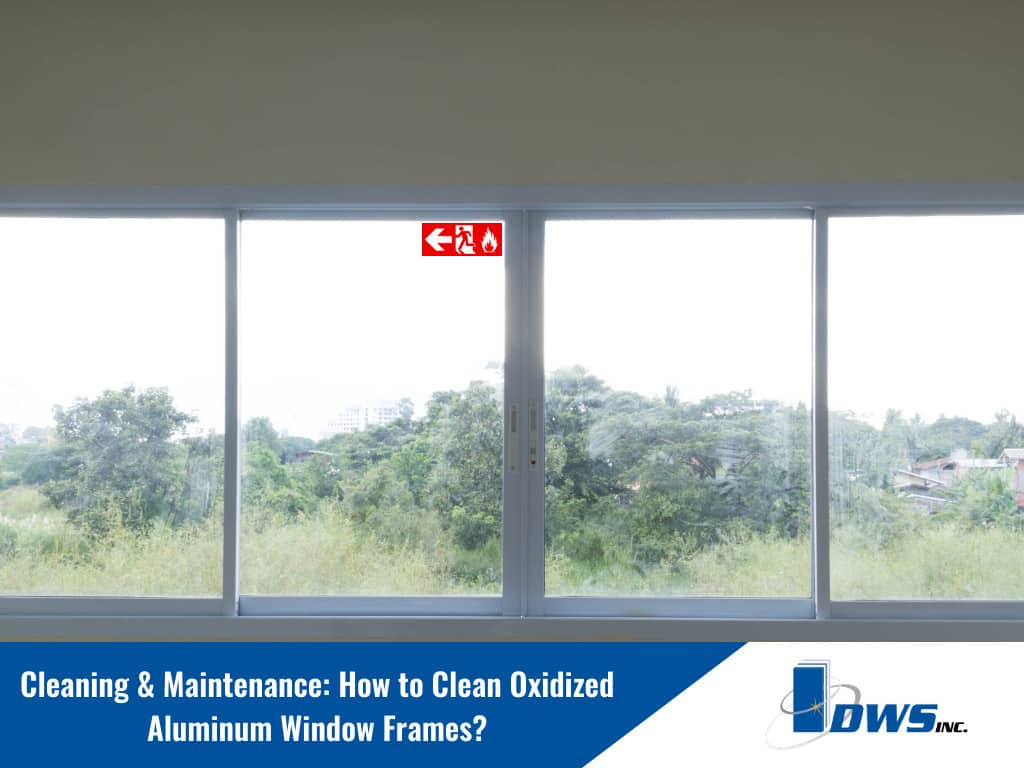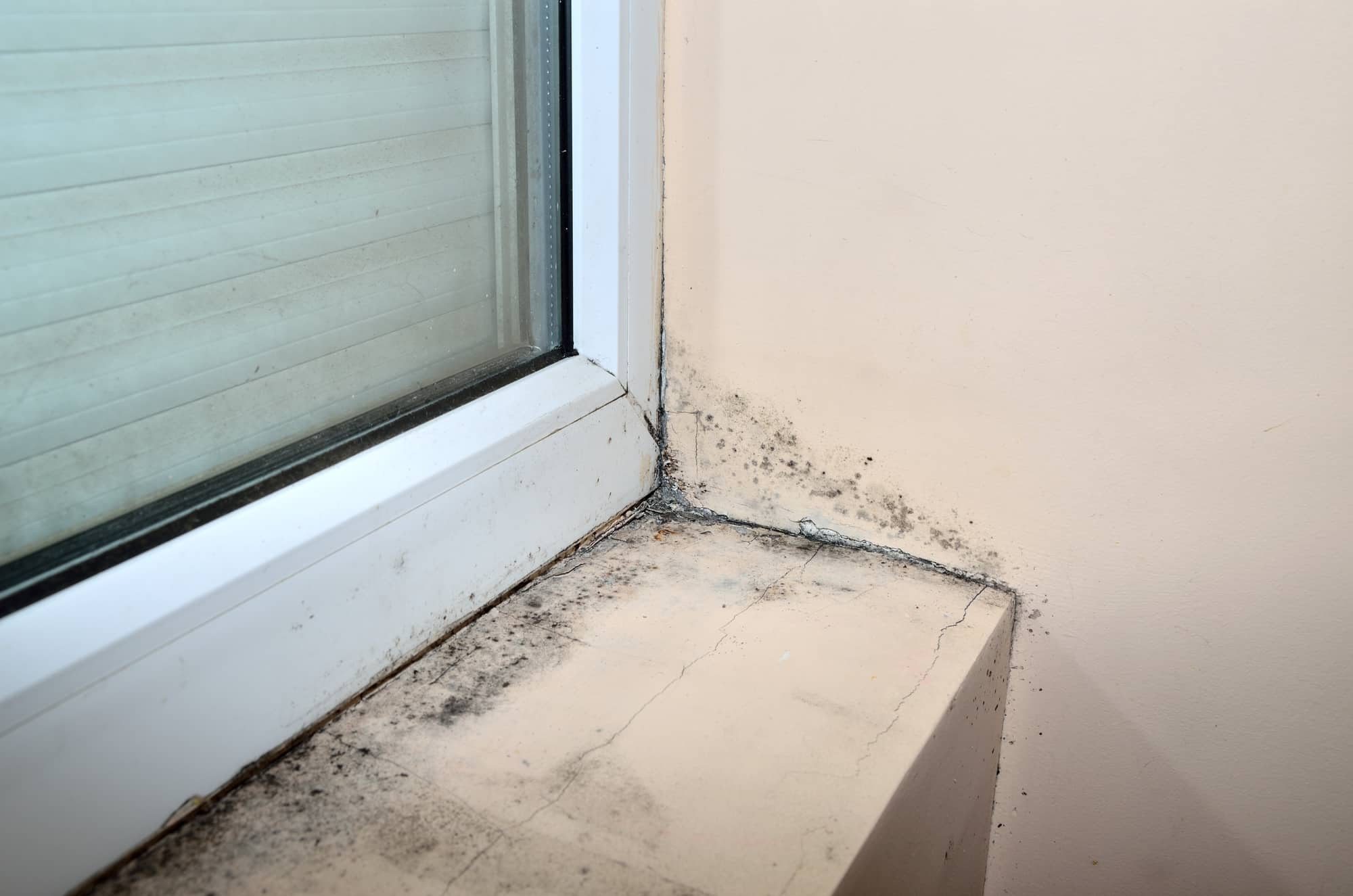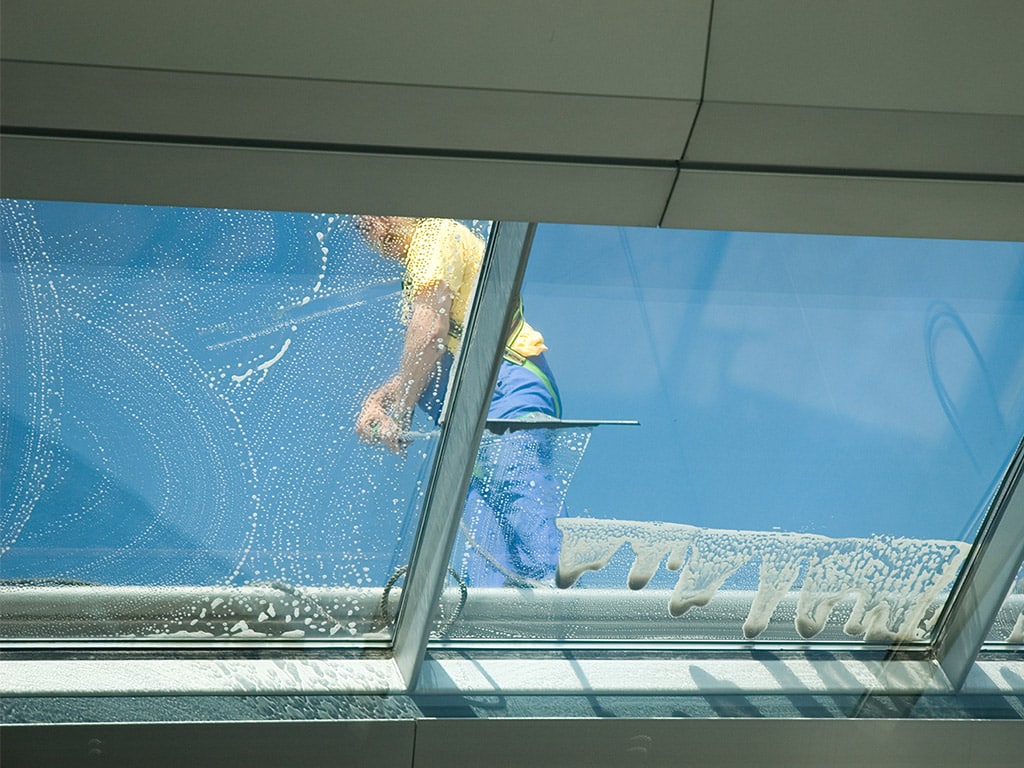Cleaning & Maintenance: How to Clean Oxidized Aluminum Window Frames?

Aluminum products, including window frames, require proper care on a regular basis. Periodic cleaning and expert maintenance after installation ensure your frame stays protected from weather and other external factors.
In this post, we want to talk specifically about how to clean oxidized aluminum window frames – something that should be done fairly often. Over time, your windows will lose some of their shine, but in serious situations, oxidation results in an ugly, dull color (often gray or brown). This is when you need to understand the best tactics for cleaning, either on your own or with the help of professionals.
What causes oxidation? Typically, anodized aluminum frames and extrusions fade or develop colored spots due to exposure to the sun. If you live close to the ocean, salty water can also cause ugly pits and corrosion.
Let’s talk about how you can expertly clean and maintain your aluminum window frames.
Clean Aluminum Windows Regularly With Care
First things first: you need to keep your frames clean and devoid of debris. We recommend using a solution of lukewarm water and mild detergent to do this. Apply the mixture to a standard bristled brush or cloth, then work on removing obvious markings and dirt.
Keep in mind that strong, chlorinated cleaners should not be used to clean. These are too abrasive and may cause harm to your window frames.
The longer a mark has been on your window frame, the more challenging it will be to remove. That’s why we recommend cleaning on a regular basis – at least once every three months. It’s also smart to coat the frame with automobile wax or something similar. This helps to prevent scratches and unsightly marks.
Another thing to remember: improper cleaning will scratch glass. Be extra careful when cleaning the window planes. The strongest thing you should use is isopropyl alcohol in a soft cloth, applied with moderate pressure. Rough brushes and/or cleaners on window panes will lead to further damage.
If you have not cleaned your window frames before, it might be a good idea to do a trial cleaning first. Apply some of your solutions and cleanse a specific area in an inconspicuous location. That way, you can see how your technique works and if it is safe for the rest of your windows.
What to Do if Window Oxidation Spots Don’t Disappear?
Dealing with some especially stubborn oxidation areas? These may look like gray-brown or white spots that soap won’t remove. Don’t give up hope just yet – there are some other tactics you can use to clean these troublesome areas.
Option 1: After cleaning the frames and window, pour equal amounts of water and white vinegar into a bucket. White vinegar is great at breaking down mineral buildups and removing residue. Apply the solution carefully and deliberately to the oxidized spots. If the solution doesn’t do its job with simple scrubbing, you may need to brush the frame with a stainless steel wire brush.
Option 2: Post regular cleaning, use a citrus-based cleaner on the trouble areas with a scrub brush. This may take a little elbow grease, but thorough rubbing should make the oxidation invisible. You can also add a mild scouring baking soda to the liquid for extra power.
Option 3: You can also purchase a commercial aluminum oxidation cleaner. Apply the cleaner to a rag, then tackle the areas with corrosion. Remember to rinse off the spots after you clean.
If none of these tricks work, talk to a professional aluminum window company. They’ll instruct you on how to clean oxidized aluminum window frames and handle tough spots.
Maintain the Window Tracks
Your next step is to take a look at your window tracks. Over time, dirt and gravel will accumulate in the channels where the window panes slide shut. Use a vacuum cleaner with a nozzle attachment to suck up the big pieces of debris. Then, go over the tracks with a hard bristle brush, removing fine dirt and dust.
Cleaning your tracks doesn’t just keep things sanitary – it also ensures your windows can slide smoothly. If the tracks are extremely dirty, you may need to apply a mixture of soap and water, then wash with a sponge. Remember to rinse and wipe dry completely to avoid dealing with corrosive residue.
Remove Mildew Frequently
Now, let’s talk about mildew. When condensation forms on the inside of your window, it can reflect higher air moisture contents inside your home. This humidity can do a few things:
- Excessive interior humidity causes structural damage.
- High levels of condensation may lead to health problems due to poor air quality.
- Wood rot, mold, and mildew growth may appear.
If you live in a cold location where you’ll be running humidifiers and heaters all winter long, it’s especially important to watch for signs of mold and mildew. The sooner you notice something, the sooner you can address it and prevent serious health and structural problems that appear during infestations.
What do you do if you spot mold on or around your aluminum windows? Our recommendation is to call in professionals to clean. Although you can attempt to eradicate mold and mildew on your own, it’s difficult to spot all of the spores with a naked eye.
To prevent the growth of mold, ensure that there’s plenty of air circulation throughout your house – especially in bathrooms where moisture and heat are frequent visitors. Whenever you can, open your windows to allow moisture to escape and cool air to come inside.
Lastly, don’t point your interior air conditioning vents or heaters directly at your insulated aluminum windows. This can increase moisture levels and lead to mold growth, discoloration, and more.
Thoroughly Lubricate Clean Aluminum Channels
Finally, if you’ve already cleaned the tracks and your aluminum windows are still not sliding properly, you’ll need to take an additional step. It’s possible that the metal surfaces aren’t lubricated enough, and that makes movement difficult.
Start by washing the sliding tracks with soapy dishwater. Then remove all dirt and grime, rinse, and allow to dry fully. After the tracks are clean, apply a dry graphite lubricant if there is metal-to-metal contact.
Graphite is great because it doesn’t attract extra dirt and dust, which can compromise your windows. Oily lubricants, on the other hand, can cause more dirt to appear in the sliding tracks.
Tip: A little bit of lubricant goes a long way. You’ll only need a couple of drops applied to friction points, like your casement window hinges. Test out the window, opening and closing it, to see if the tracks seem particularly stuck at any point.
For More Help With Your Aluminum Windows
Hopefully, this post has taught you a thing or two about how to clean oxidized aluminum window frames and prevent other problems, such as mold growth. Although it may seem a bit complicated to keep aluminum frames spotless, there are certainly safe, effective ways to do so.
Do you have more questions about installing, cleaning, or maintaining aluminum window frames? Don’t hesitate to reach out to our team here at DWS Inc. We provide fast, efficient window frame installations for California residents, as well as a variety of other products that make maintenance, oxidation treatment, and cleaning easier.
Learn all about our tactics and products by calling 510-797-4584. You can also reach out online. We look forward to hearing from you soon!






